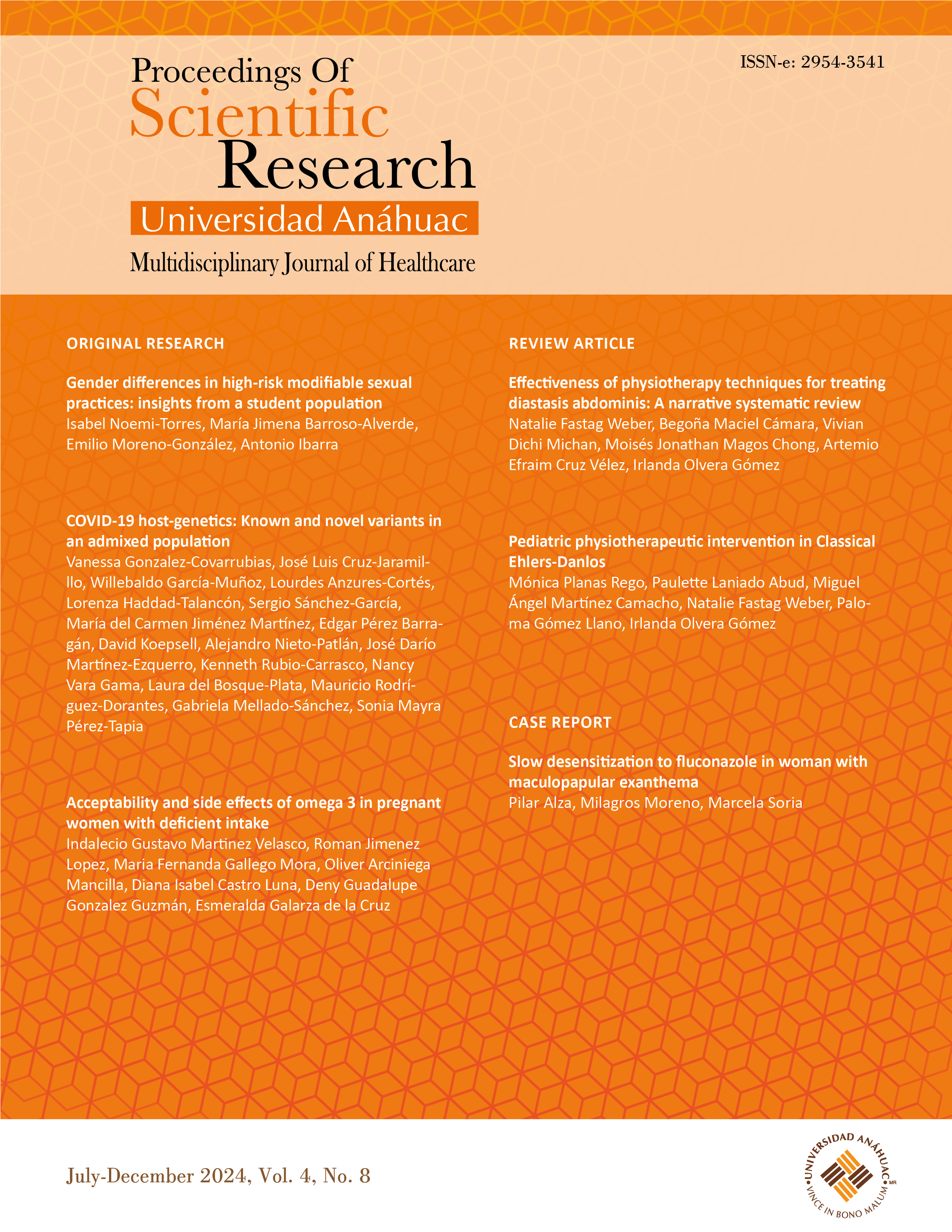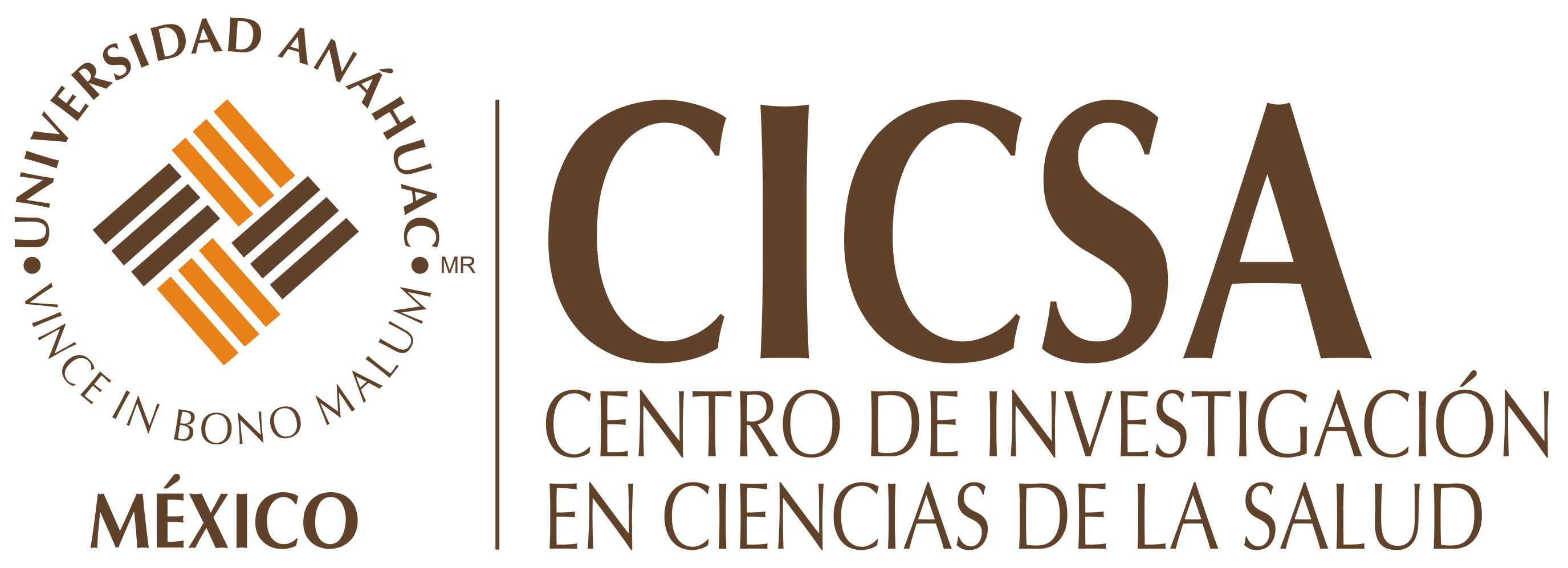Gender Differences in High-Risk Modifiable Sexual Practices: Insights from a Student Population
DOI:
https://doi.org/10.36105/psrua.2024v4n8.01Keywords:
sexually transmitted infections, sexual education, gender, prevention, sexual protectionAbstract
Introduction: Sexually transmitted infections (STIs) are on the rise, particularly in vulnerable groups with limited sexual education and healthcare access. In Mexico, high rates of STIs underscore the need for effective public health strategies and sexual education. Objective: Investigate gender differences in high-risk sexual practices among students aged 18-25 in a private University in Mexico City, focusing on modifiable behavioral risk factors for STIs. Materials and Methods: This research performed a cross-sectional observational design, surveying students from a private university. A z-score test was performed, with a 95% confidence interval and a 5% error. Results: A difference of 30% (95% CI, p=0.003) between the male and female participants that received health education was identified (80% female vs 50% males). A difference of 25% (95% CI, p=0.0122) between females and males (67.5% females vs 42.5% males), reported discussing STI status before sexual activities. Regarding the use of barrier methods, a difference of 25% (95% CI, p=0.0122), (70% females vs 45% males) reported the consistent use of such methods. Conclusion: These findings underscore the urgent need for targeted sexual health education, particularly for men, to address the substantial knowledge gaps and risky behaviors. Comprehensive and accessible education programs, coupled with community engagement and policy support, are critical to fostering a culture of sexual health responsibility among young adults.
Downloads
References
Fasciana T, Capra G, Lipari D, Firenze A, Giammanco A. Sexually Transmitted Diseases: Diagnosis and Control. Int J Environ Res Public Health. 2022 Apr 27;19(9):5293. https://doi.org/10.3390/ijerph19095293
National Academies of Sciences, Engineering, and Medicine;Health and Medicine Division;Board on Population Health and Public Health Practice;Committee on Prevention and Control of Sexually Transmitted Infections in the United States. Sexually Transmitted Infections: Adopting a Sexual Health Paradigm. Crowley JS, Geller AB, Vermund SH, editors. Washington (DC): National Academies Press (US); 2021 Mar 24. https://doi.org/10.17226/25955
Pfennig-Bass CL, Bridges EP, Gupta N, Nusbaum J. Points & Pearls: Emergency department diagnosis and treatment of sexually transmitted diseases. Emerg Med Pract. 2019 Apr 1;21(Suppl 4):1-2.
Global health sector strategy on sexually transmitted infections, 2016–2021. Geneva: World Health Organization; 2016.
Australian Institute of Health and Welfare. Risk factors: overview [Internet]. Canberra: AIHW; [cited 2023 Oct 23]. Available from: https://www.aihw.gov.au/reports-data/behaviours-risk-factors/risk-factors/overview.
World Health Organization. Sexual health [Internet]. Geneva: World Health what Organization; [2006]. Available from: https://www.who.int/health-topics/sexual-health#tab=tab_2
Shannon CL, Klausner JD. The Growing Epidemic of Sexually Transmitted Infections in Adolescents: A Neglected Population. Curr Opin Pediatr. 2018 Feb;30(1):137–143. https://doi.org/10.1097/MOP.0000000000000578
Centers for Disease Control and Prevention. Adolescents and STDs Fact Sheet [Internet]. Atlanta, GA: Centers for Disease Control and Prevention; 2022 [cited 2023 Oct 23]. Available from: https://www.cdc.gov/sti/?CDC_AAref_Val=https://www.cdc.gov/std/life-stages-populations/stdfact-teens.htm
Dirección General de Epidemiología. Boletín Epidemiológico: Sistema Nacional de Vigilancia Epidemiológica Sistema Único de Información. Secretaría de Salud, México. 2023;40(5):1-84.
Gayet, C. Infecciones de transmisión sexual en México: una mirada desde la historia y el género. México: Secretaría de salud; 2015;372.
Everlywell. STD Statistics & Data 2022 | 38 STD Statistics for College Students [Internet]. Everlywell; [cited 2024 Jan 26]. Available from: https://www.everlywell.com/blog/sti-testing/std-statistics-college-students/
Dirección General de Epidemiología. Boletín Epidemiológico: Sistema Nacional de Vigilancia Epidemiológica Sistema Único de Información. Secretaría de Salud, México. 2023;40(5):1-84.
González C. STIs on the rise among Mexican teens [Internet]. El Universal. 2019 Feb 15 [cited 2024 Jan 26]. Available from: https://www.eluniversal.com.mx/english/stis-rise-among-mexican-teens/
Faludi C, Rada C. Gender Differences in Sexual and Reproductive Health Education in the Family: A Mixed Methods Study on Romanian Young People. BMC Public Health. 2019;19(1103):1-13.
Burrell CN, Sharon MJ, Bassler J, Davidov DM. Gender Differences in Sexual Health Knowledge Among Emerging Adults in Acute-Care Settings. J Am Osteopath Assoc. 2019 May 1;119(5):289-298. https://doi.org/10.7556/jaoa.2019.050

Published
Issue
Section
License
Copyright (c) 2024 Isabel Noemi-Torres, María Jimena Barroso-Alverde, Emilio Moreno-González, Antonio Ibarra

This work is licensed under a Creative Commons Attribution-NonCommercial-NoDerivatives 4.0 International License.
All the intellectual content found in this publication is licensed to the consumer public under the figure of Creative Commons©, unless the author of said content has agreed otherwise or limited said faculty to "Proceedings of Scientific Research Universidad Anáhuac. Multidisciplinary Journal of Healthcare©" or "Universidad Anáhuac Mexico©" in writing and expressly.
Proceedings of Scientific Research Universidad Anáhuac. Multidisciplinary Journal of Healthcare is distributed under a Creative Commons Attribution-NonCommercial-NoDerivatives 4.0 International License.
The author retains the economic rights without restrictions and guarantees the journal the right to be the first publication of the work. The author is free to publish his article in any other medium, such as an institutional repository.













